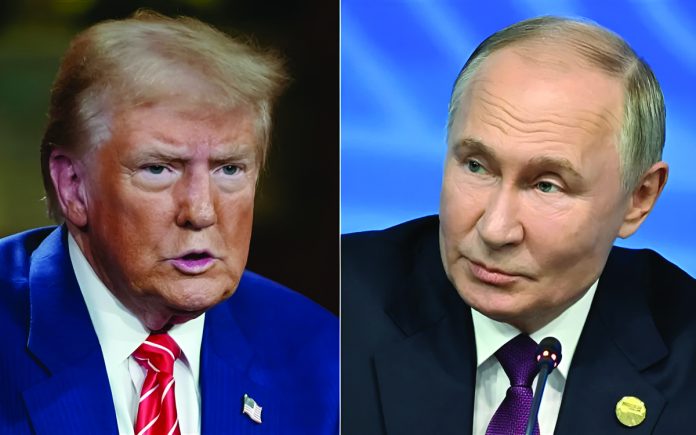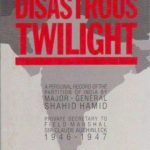The geopolitical stage has once again become the epicenter of controversy, sparked by an astonishing two-hour telephone conversation between President Trump and his Russian counterpart, Vladimir Putin. Reportedly, this discussion revolved around nothing less than redrawing global borders a development eerily reminiscent of the infamous 1945 Yalta Conference, which shaped post-World War II geopolitics. Dubbed “Yalta 2.0,” this proposed arrangement has left analysts questioning the intentions behind this unprecedented dialogue: Is it a genuine path to peace or merely a cunning trap?
President Trump, notorious for his bold, often aggressive, policy decisions, has repeatedly stated his intention to “Make America Great Again,” seemingly unconcerned by the diplomatic backlash or global opinion. His second tenure has amplified this approach significantly. Recent developments suggest Trump’s willingness to prioritize U.S. interests over traditional alliances, as demonstrated by his abrupt reduction in military and civilian aid to foreign nations and his aggressive stance toward allies over Ukraine. Thus, it is unsurprising that Trump’s conversation with Putin raised alarms internationally, intensifying concerns about American hegemonic ambitions.
On the surface, “Yalta 2.0” promises a ceasefire and global stability through a mutual understanding between the two major powers, particularly concerning Ukraine a region of intense conflict and significant geopolitical value. However, beneath this veil of diplomacy lies a complex web of strategic and economic ambitions that serve primarily American interests. The Trump administration has shown persistent interest in Ukraine’s valuable mineral resources, suggesting a dual agenda beyond mere peace-making. Skeptics rightly point out that America’s past interventions have often involved the strategic exploitation of foreign resources under the pretense of security and stability.
Russia, for its part, has publicly expressed suspicion, labeling the proposed ceasefire and territorial negotiations as a “ceasefire trap.” The Russian media and political analysts fear that this could be a strategic maneuver aimed at weakening Russia’s geopolitical position, especially given America’s recent aggressive actions towards Ukraine, including attempts to secure control over critical nuclear energy infrastructure. For Moscow, allowing the U.S. to redraw boundaries under the guise of peace is seen as a severe risk to Russia’s regional influence and strategic interests.
The historical parallel to Yalta is indeed striking. The original Yalta Conference of 1945, attended by Roosevelt, Churchill, and Stalin, effectively carved Europe into spheres of influence, profoundly affecting global politics for decades. It provided short-term stability but planted seeds for long-term geopolitical tensions, including the Cold War. Today, a similar scenario seems to be unfolding. Trump’s proposal to Putin raises crucial questions: What regions are on the negotiation table? What concessions might Russia have to make, and at what cost?
Critically, the core issue remains Ukraine. The U.S. administration has already openly shown its intent to secure Ukraine’s nuclear plants, a move masked by promises of enhanced security and economic prosperity but driven by strategic and financial ambitions. The Ukrainian President, Volodymyr Zelensky, has firmly stated that American ownership of critical infrastructure is “not on the table,” recognizing the inherent dangers of compromising national sovereignty. Yet, Trump’s aggressive diplomatic tactics indicate that Ukraine might be under intense pressure to reconsider.
For Russia, Trump’s maneuvering appears less like genuine diplomacy and more like a geopolitical chess game designed to diminish Moscow’s power in Eastern Europe. The promise of redrawn borders might momentarily appeal to Russian strategic calculations potentially providing a face-saving exit from the exhausting and costly conflict in Ukraine. However, the broader implications are unsettling. If Russia agrees to Trump’s terms, it risks weakening its long-term geopolitical influence, inadvertently legitimizing American hegemony in a region it has traditionally considered crucial to its national security. Europe, too, watches anxiously. Any U.S.-Russia agreement to redraw geopolitical boundaries could severely impact European autonomy, effectively placing Europe under heightened U.S. influence and dependency. Trump’s agenda consistently disregards traditional alliances and European concerns, openly challenging Europe’s strategic independence. A Yalta 2.0 scenario, brokered solely between Trump and Putin, threatens to sideline Europe entirely, limiting its capacity to manage its security and energy needs independently. Moreover, Trump’s interest in Ukrainian mineral resources cannot be overlooked. Ukraine, rich in lithium, titanium, uranium, and other valuable minerals essential to technological and military industries, represents a lucrative opportunity for American corporations. Trump’s willingness to negotiate with Putin may reflect less a commitment to peace than a calculated move to secure American economic interests under the cover of diplomacy. It can also be said NATO’s presence in Ukraine is in disguise.
Thus, whether this “new Yalta” is a genuine diplomatic endeavor or a strategic maneuver to reinforce America’s global dominance, masked as peaceful reconciliation, remains unclear. Russia’s skepticism seems justified: history teaches that major power agreements often disguise deeper hegemonic designs. In conclusion, the proposed “Yalta 2.0” between Trump and Putin carries troubling implications. While it promises an end to hostilities and regional stability, beneath this optimistic narrative lies a high-stakes geopolitical gamble. It risks the sovereignty of Ukraine and the autonomy of Europe and potentially traps Russia in a strategic corner. The world should approach this development with utmost caution. After all, behind Trump’s promise of peace and stability often lies a more complicated and aggressive reality one aimed at cementing American dominance at the expense of global stability.







